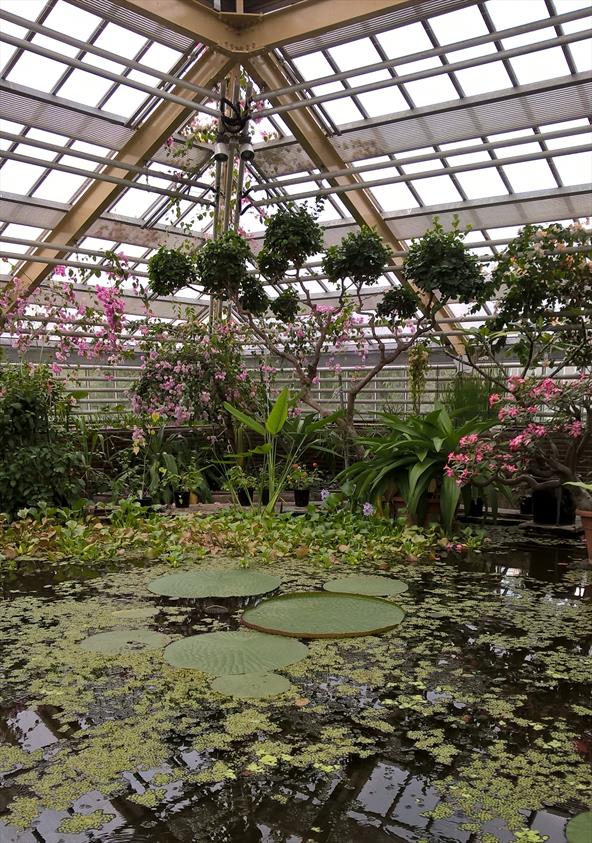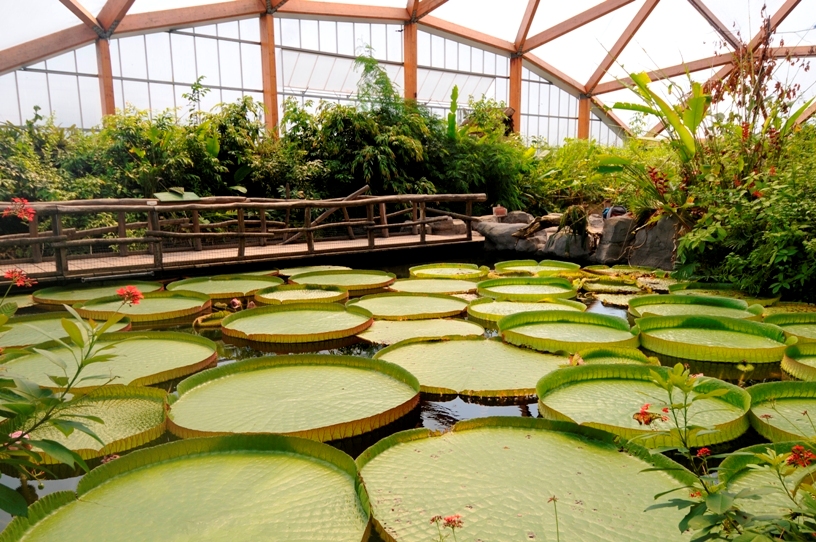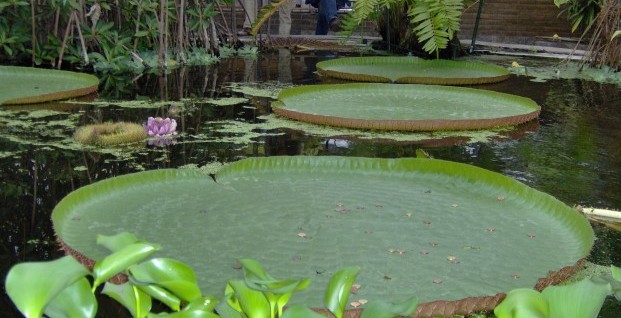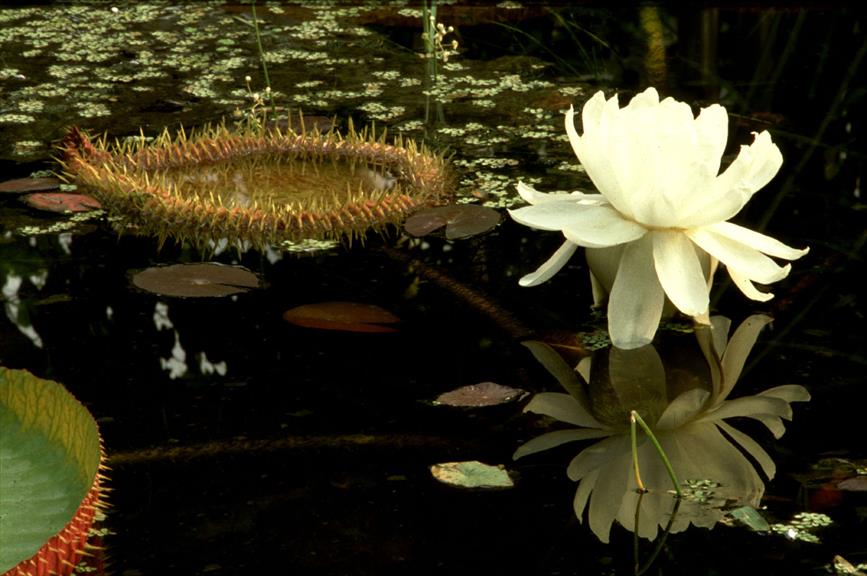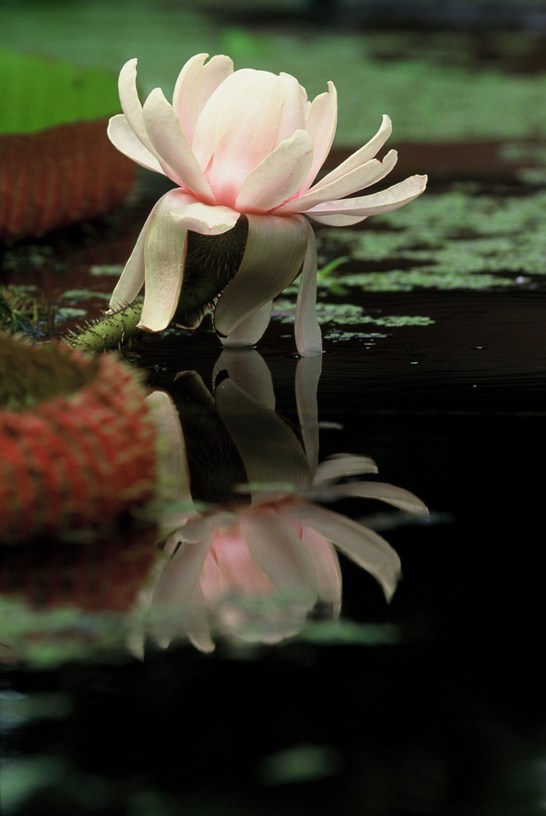Amazon Waterlily
Victoria amazonica
Water-lily family (Nymphaeaceae)
The queen of the water lilies
This giant water lily with leaves up to 2 m wide is one of the most engaging natural history discoveries from the Amazon. It involves two species, Victoria amazonica and Victoria cruziana, and the hybrids arising from crossing them.
Newly formed flowers opening for the first time are white in colour. As with many other primitive plants, such as the magnolia, the pollinators are simple beetles attracted by the sweet pineapple fragrance. Inside they are rewarded with starch-rich packages located at the base of the flower styles. The temperature inside the flower is up to 9 °C warmer than outside. During the visit, the beetles deposit the pollen that they have brought with them onto the stigma, which is only receptive for that one night. On the second night the flower, now pink in colour, opens again only then to wither away in order to produce the seeds.
Themes
Crown jewel in the Leiden Botanic Garden and Rotterdam Zoo.
In 1801 the giant water lily was discovered by Tadeáš Haenke, botanist and naturalist, who was sent to Bolivia by the Spanish government to study the flora. Haenke is said to have first seen the Victoria amazonica on the river Mamore, one of the tributaries of the Amazon.
The flowers open during the evening with a pineapple-like fragrance. A chemical reaction inside the flower heats the bloom to 12°C above the ambient temperature, helping to disperse the perfume and attract the scarab beetle pollinator (Cylocephata castaneal).
Details
| Description: | Aquatic plant, with floating leaves of 1.2 - 1.6 m in diameter. |
|---|---|
| Distributions: | Tropical south america |
| Habitat: | Quiet, shallow waters. |
| Hardiness: | 50 - 59 f (heated glasshouse - subtropical) |
| Flower color: | White, pink |
| Notes on flowers: | Flowers white only for the first night following opening, becoming pink thereafter. |
